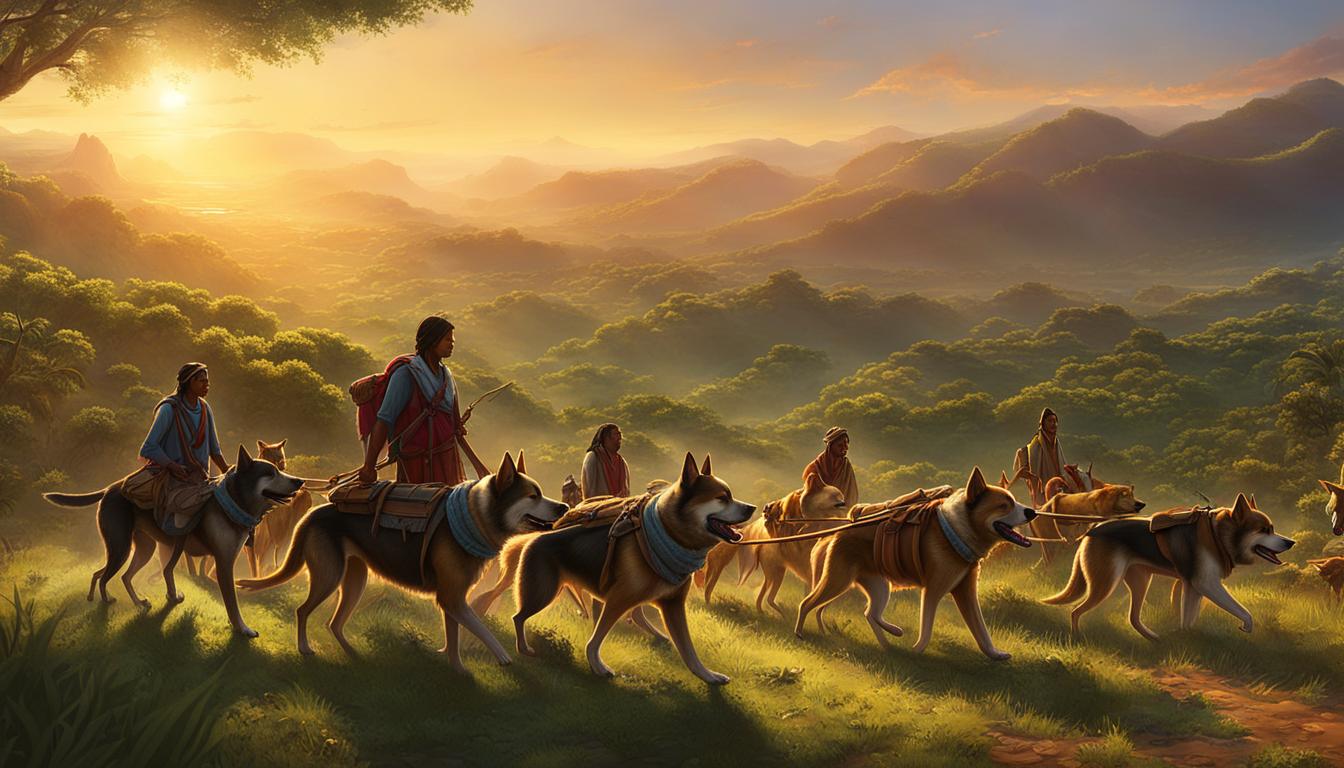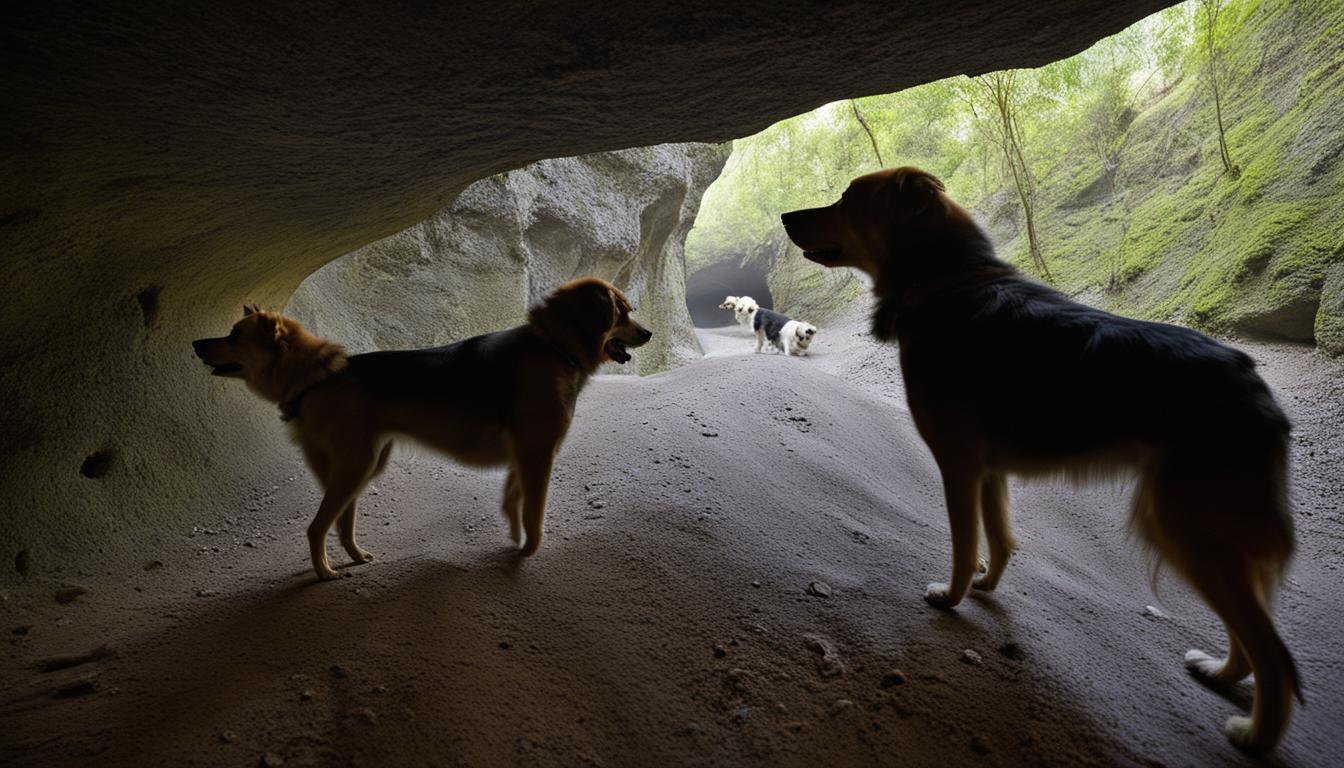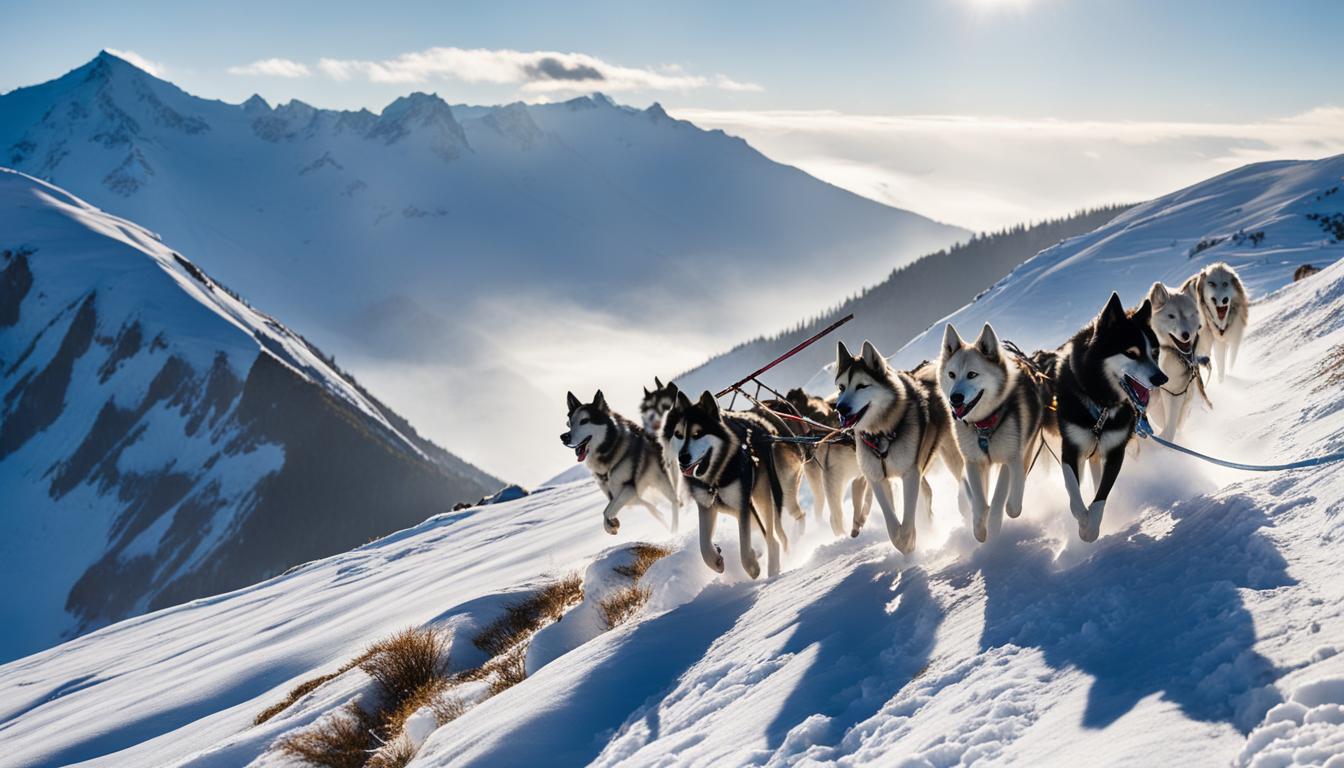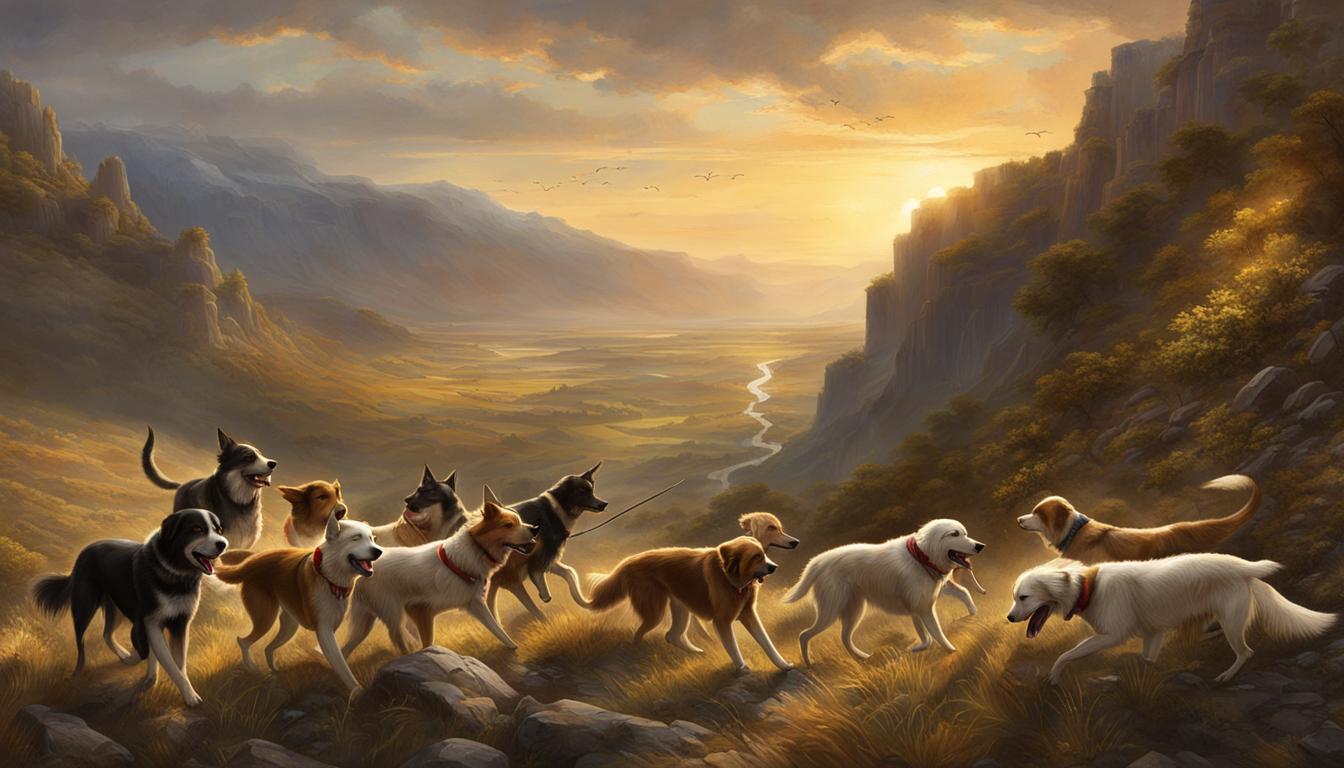Dogs have played a crucial role in human history, especially in Indigenous migrations. Recent research from various fields has shed light on the domestication of dogs, the migration of the first Americans, and the relationships between Native Americans and canines. Dogs were not only companions to Indigenous peoples but also served as beasts of burden, offered protection, and even provided food on special occasions. The burial of dogs alongside humans in archaeological sites further emphasizes their importance and the close bond between humans and canines in tribal settlements.
- Dogs played a crucial role in Indigenous migrations, serving as companions, guides, and helpers.
- They aided in the transportation of goods, provided protection, and contributed to hunting practices.
- The presence of dog burials in ancient Native American settlements highlights their historical significance.
- Dogs were depicted in the art of native tribes and were given proper burials, reflecting their cultural significance.
- Genetic studies show that dogs arrived in the Americas approximately 10,000 years ago, aligning with human migration patterns.
Dogs in Precontact America
Dogs have played a significant role in the history of Indigenous migrations in America. Archaeological evidence has uncovered the presence of dogs in precontact Native American settlements, highlighting their historical significance and their close relationship with Indigenous communities.
Dog burials have been discovered in various locations, dating back as far as 12,000 to 14,000 years ago, coinciding with the migration of the first Americans into the continent. These burials demonstrate the importance of dogs in tribal journeys and settlements, suggesting that dogs accompanied Native Americans during their migrations and played an active role in their resettlement and survival.
Genetic studies have revealed that dogs were domesticated from wolves indigenous to East Asia and brought to the Americas by humans. The presence of dogs in precontact Indigenous communities further supports the theory that dogs traveled alongside humans during their migration into the Americas, reinforcing the deep bond between dogs and Native American peoples.
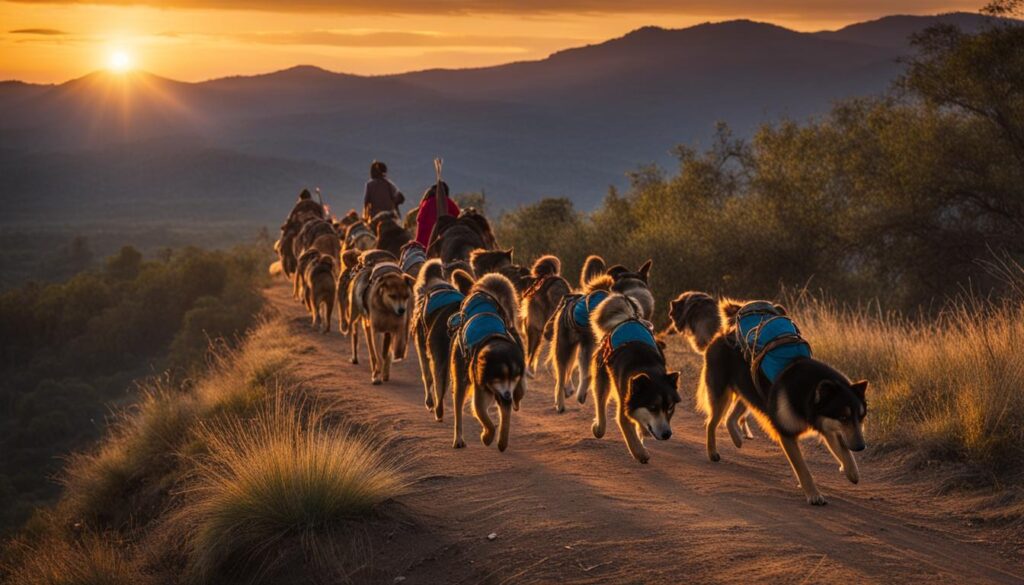
Dogs’ Role as Beasts of Burden and Travel Companions
“Dogs played an essential role in aiding Indigenous migrations, acting as beasts of burden and loyal travel companions. Their strength and endurance made them ideal for hauling firewood and other supplies on travois. They also provided protection and warmth, ensuring the well-being of Native American communities during their journeys.” – Native American Historian
Dogs in Native American Hunting Practices
Native American hunting practices were essential for the survival and sustenance of Indigenous communities. Dogs played a significant role in these hunting endeavors, aiding precontact Native Americans in their pursuit of game. The close bond between humans and canines allowed for a seamless collaboration, with dogs offering their unique hunting traits to enhance the success of the hunt.
Archaeological and historical evidence suggests that Native Americans selectively bred dogs for specific hunting traits. These traits included speed, stamina, and strength, all of which were essential for tracking and capturing prey. Dogs with these desired traits were preferred companions for hunting, reflecting the Indigenous peoples’ understanding of the important role dogs played in their survival.
“Dogs were not only companions to Indigenous peoples but also skilled hunters. They were adept at chasing down game over long distances, often outperforming their human counterparts”
The hunting skills of dogs allowed precontact Native Americans to access a more diverse range of food sources. This was particularly crucial during times of scarcity or when primary food sources were limited. Dogs not only provided valuable assistance in the actual hunting process but also helped track wounded or fleeing animals, increasing the chances of a successful kill and providing sustenance for the community.
| Indigenous Dog Breeds | Hunting Trait |
|---|---|
| Siberian Husky | Sled pulling and endurance |
| Salish Wool Dog | Wool production for textiles and trade |
| Chinook | Strength and hauling capacity |
The significance of dogs in Native American hunting practices extends beyond their immediate contributions to food acquisition. Dogs held cultural importance within Indigenous communities, with their hunting prowess often celebrated in ceremonies and artwork. Native American tribes recognized the dog’s integral role in their survival and made efforts to honor and commemorate their canine companions.
The presence of dogs in precontact Native American societies and their contributions to hunting practices highlight the deep historical and cultural significance of canines in Indigenous communities. These dogs were instrumental in providing sustenance, enhancing the efficiency of hunting efforts, and ensuring the survival and well-being of Indigenous peoples.
Dogs’ Cultural Significance in Indigenous Communities
Dogs held a significant cultural significance in precontact Native American communities. They were not only seen as companions but were also depicted in the art of native tribes, particularly as effigies on ceramic pots. These depictions highlighted the close bond between dogs and humans and their importance in tribal life. Furthermore, the careful burial of dogs alongside humans in archaeological sites further emphasized the cultural significance of canines in Indigenous communities.
Some Native American groups served dogs as food for special occasions, as documented by early European explorers. While this may seem surprising to some, it was a testament to the deep connection between dogs and humans. Dogs were cherished and honored, even in death. Archaeological evidence reveals that dogs were given proper burials, sometimes in curled or sidewise positions, suggesting that they were seen as companions and friends in life and even in the afterlife.
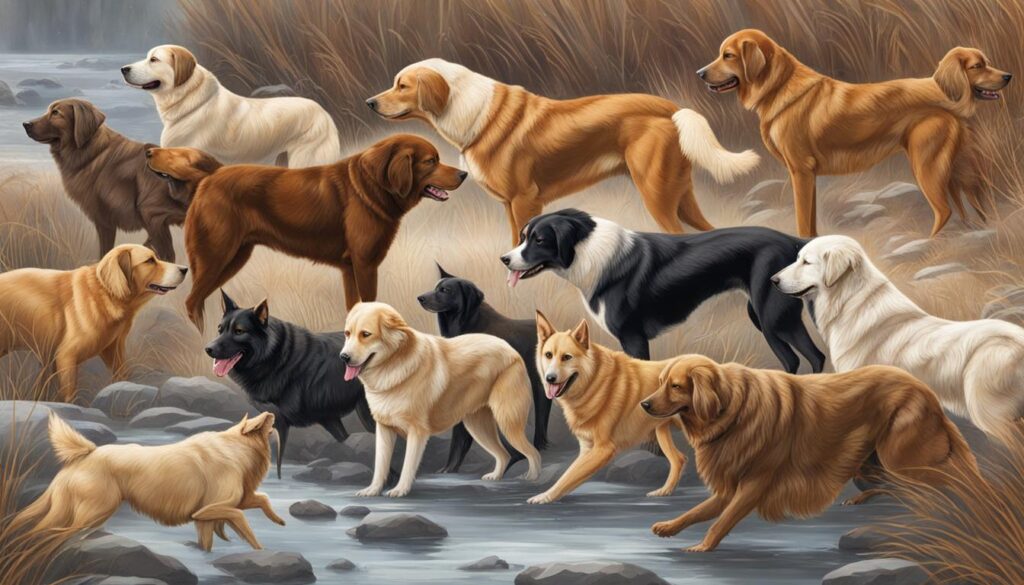
Migration Patterns and the Journey to the Americas
Genetic studies have also revealed that dogs’ migration patterns align with human migration patterns, highlighting their close association with indigenous peoples. Ancient dogs followed the migratory routes of humans, embarking on a remarkable journey from East Asia to the New World. After a subgroup of ancestral dogs migrated from southern East Asia to the Middle East, Africa, and Europe, some of these dogs made their way back to northern China before eventually traveling to the Americas.
The timing of dogs’ arrival in the Americas coincides with the first dog burials found in the region, further affirming their presence and integral role in indigenous communities. This migration of dogs alongside humans emphasizes the significant contributions of canines in shaping the history and development of Native American settlements.
Summary
Genetic studies have provided invaluable insights into the genetic diversity and migration patterns of ancient dogs in the Americas. These studies have revealed that dogs arrived in the Americas around 10,000 years ago, originating from southern East Asia. The genetic diversity of ancient American dogs suggests a complex history of domestication and potential interbreeding with local wolf populations. Dogs followed human migration routes, journeying from East Asia to the New World and playing a significant role in indigenous communities throughout their migrations.
| Genetic Findings | Implications |
|---|---|
| Ancient American dogs exhibit high genetic diversity | Indicates complex origins and domestication history |
| Genetic similarities between ancient American dogs and American wolves | Suggests potential interbreeding or domestication from local wolf populations |
| Dogs’ migration patterns align with human migration patterns | Highlights the close association between dogs and indigenous peoples |
The Journey of Dogs: From East Asia to the New World
Ancient dogs have embarked on a remarkable journey, following the migratory patterns of humans, as they made their way from East Asia to the New World. Approximately 15,000 years ago, a subgroup of ancestral dogs migrated from southern East Asia to the Middle East, Africa, and Europe. From there, some of these dogs returned to northern China before venturing across the Bering land bridge into the Americas. This migration aligns with the timing of the first dog burials found in the region, highlighting the deep bond between dogs and Indigenous peoples and their significant contributions to Indigenous settlements throughout history.
This fascinating journey of dogs to the New World sheds light on the ancient dog migration routes and their migration to North and South America. The presence of dogs in different parts of the Americas signifies the significant role they played in tribal migrations and settlements. Dogs not only accompanied Indigenous peoples but also aided in their journeys by providing companionship, guidance, and protection.
The migration of dogs from East Asia to the Americas closely mirrors the human migration patterns and supports the notion of a strong symbiotic relationship between humans and canines. This bond further underscores the historical significance of dogs in tribal journeys and their immense contributions to the survival and success of Indigenous peoples throughout the ages.
Conclusion
Dogs have played a crucial role in Indigenous migrations, serving as loyal companions, trusted guides, and valuable helpers to Native American communities throughout history. Their presence in precontact Native American settlements is a testament to their historical significance and the deep bond between dogs and humans.
These intelligent and adaptable animals were not just pets; they were integral to the survival and success of Indigenous peoples. Dogs served as beasts of burden, tirelessly hauling essential supplies on travois during long migrations. They provided protection to Native American settlements, serving as guardians and warning systems against potential threats.
Furthermore, dogs played a vital role in hunting practices, as Native Americans selectively bred them for specific traits such as speed, stamina, and strength. Dogs aided in tracking, flushing out game, and retrieving prey, ensuring a steady supply of food for Indigenous communities.
Understanding the contributions of dogs in Indigenous migrations offers us a glimpse into the rich history of human settlements and the cultural significance of animals in shaping our societies. These loyal canines not only facilitated the physical journeys of Native American tribes but also provided emotional support, companionship, and a profound connection to the natural world.
FAQ
How did dogs contribute to Indigenous migrations?
Dogs served as companions, guides, and helpers to Native American communities, aiding in transportation, providing protection, and contributing to hunting practices.
Did dogs have a cultural significance in precontact Native American communities?
Yes, dogs held cultural significance and were depicted in the art of native tribes. They were also given proper burials, emphasizing their close bond with humans.
What were the practical roles of dogs in Indigenous migrations?
Dogs served as beasts of burden, hauling essential items on wooden frames called travois. They also provided warmth with their bodies and sometimes served as a source of food.
How were dogs involved in Native American hunting practices?
Dogs were selectively bred for specific hunting traits, such as speed, stamina, and strength. They aided precontact Native Americans in their hunting efforts, ensuring survival and providing a source of food.
What do genetic studies reveal about the diversity and migration patterns of ancient dogs?
Genetic studies show that dogs arrived in the Americas approximately 10,000 years ago, following the migration patterns of humans. Dogs from southern East Asia exhibit the highest genetic diversity.
How did ancient dogs migrate from East Asia to the New World?
Dogs migrated from southern East Asia to the Middle East, Africa, and Europe before some of them returned to northern China. From there, they traveled to the Americas, aligning with the timing of the first dog burials found in the region.
What is the historical significance of dogs in tribal journeys?
Dogs played a crucial role in Indigenous migrations, serving as companions, guides, and helpers. Their presence in precontact Native American settlements highlights their contributions to Indigenous communities throughout history.

